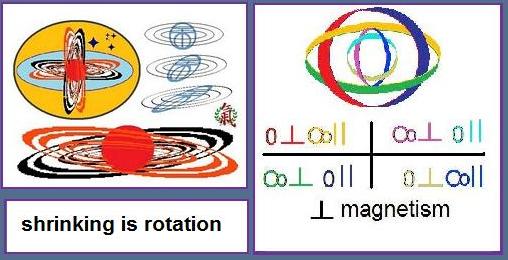Confluence IX
(Thinking in a Quasifinite Box)
L. Edgar Otto 22 February, 2013
*10:50:44 AM Thinking in a Quasifinite Box:
First we have the
finite question of what can be the inside or outside of a space or system to
some degree of physical entities separated at least from an internal singularity
viewpoint as absolutely empty space.
Debates such as the
emphasis on a finite world of resources that may lead to limited exponential
expansion and great consequences, such as issues of fossil fuel as energy and
environmental change culling the population sustained are radical when pushed
into a finite or continuous stance only.
For while a
sustainable growth may be regarded as illogical from an expanding viewpoint it
is not necessarily the case that higher and foundational states will not be
reached responsibly despite the independence of the modern term science over
the more general span of research as natural philosophy.
In the overview the
stability is somewhat independent of the equivalence, in physicality and in
abstraction, of linear or exponential growth systems, reversible and irreversible. Thus a moderation of view
as stable and unstable is a conceptual equivalent idea in a sea of or single
singularities to which we may embed the unity of symmetric metastable systems
and predict their directions within some interval of time. In not questioning our core assumptions at
this foundational level our theories of everything may not be comprehensive and
clearly inclusive of the very idea of unity added between our systems. Paradox and even contradictions may at times
be helpful in our breakthroughs beyond our too narrow thinking.
In music in
particular, this tension in the spiraling form of step or logarithmic ratios,
the grounding of finite descriptions into a unified matrix (that itself may
represent such a singularity) we may exceed the quasifinite color patterns
beyond the chromatic- in which case, and by ear, we can extend chords beyond
four notes... in effect we see the octave itself doubled with pairs of notes, C
to E, by which we might extend the idea of scale outwardly to cover more notes
on a keyboard beyond the 32 or 24, 7 and 5 arithmetical patterns. This is to say, in our perception of sound in
its linear reversals we may exchange what seems directions of impulse as notes
are presented or fade or not hear some somethings we can feel of vibrations, at
all.
In doing this we may
go beyond the 13th to find what may be acceptable in our extensions of
dimensions as discordant- clearly if the harmonics of a scale were equal in
energy the resulting chord would be increasingly discordant in both systems and
the lowest note Bb between molecules may reach some limit of that possible
between objects to the extent of our technology... the curve for tuning pianos
is not smooth at the extremity of ends of the general scales if considered as
some form of continuity- so to as we tweak our finer instruments of colliders
or telescopes we may imagine this a property assumed to extend to a radical
change of the foundations of physics and nature.
As it stands now, in
low dimensions and energies, what would we call the E or the doubled octave
relation (of which in tempered tuning the frequency matches between the notes)
or the C to E binary combination where we already realize in higher notes there
there are other combinations of four notes possible, E then a quasic
dimensional generation as a 17th... the C itself being a 15th and all
the complicated group properties that implies?
Surely we know and have found the pleasant sound in a sequence of notes
depends on a space that describes proximity between them, such as I suspect is
the general xtalline and fractal like quasic space its original finite and
discrete conception.
A scientific natural
philosophy is a better pattern of order to expand or intelligibly contain our
span and depth of thinking.
Growth has its limits
but with facts of wisdom it is meaningful to say that it can be sustained.
* * * * * * * *
*02:33:52 PM I've decided to take a closer listen to the
jazz era...
*I forgot to mention
that from the count of notes to C-E from the chromatic perspective what would
we find but a 24, 25, and 26 extension of that spectrum- which brings us to
many intuitive theories such as the role of 26 in string theories or how it
corresponds between the lowest square number to the lowest cube number of which
26 is in a sense a mediator in this number theory observation...
* * * * *




No comments:
Post a Comment